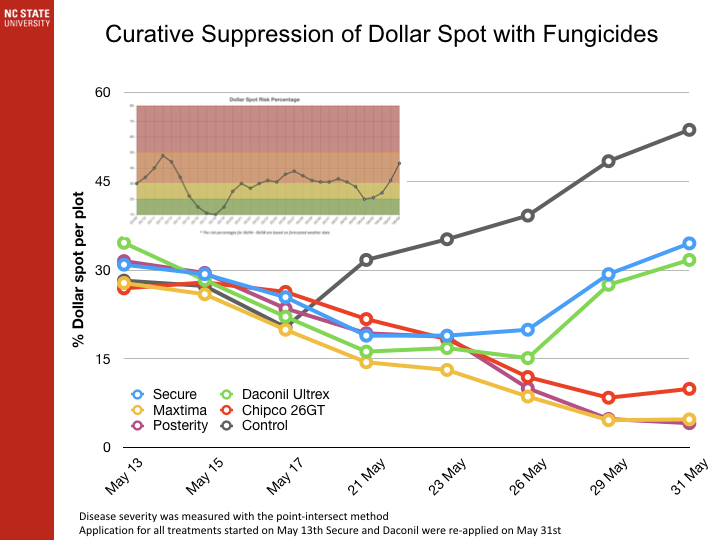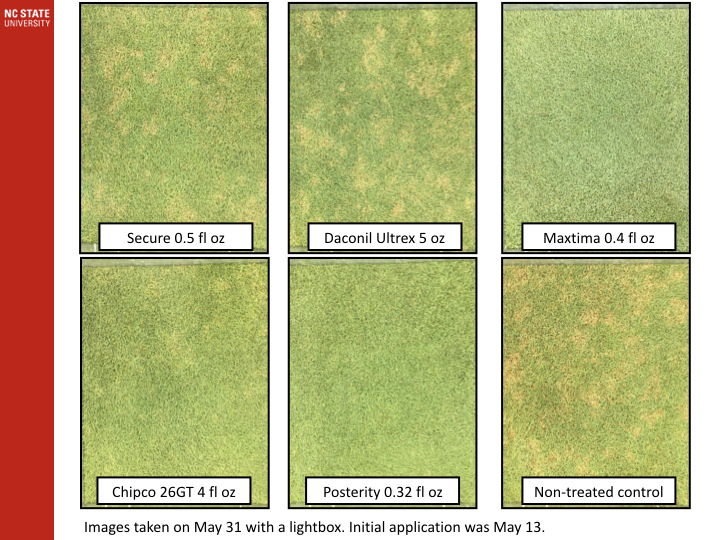My Turf is Sick! Spray a Fungicide and Call Me in Two Weeks
go.ncsu.edu/readext?619895
en Español / em Português
El inglés es el idioma de control de esta página. En la medida en que haya algún conflicto entre la traducción al inglés y la traducción, el inglés prevalece.
Al hacer clic en el enlace de traducción se activa un servicio de traducción gratuito para convertir la página al español. Al igual que con cualquier traducción por Internet, la conversión no es sensible al contexto y puede que no traduzca el texto en su significado original. NC State Extension no garantiza la exactitud del texto traducido. Por favor, tenga en cuenta que algunas aplicaciones y/o servicios pueden no funcionar como se espera cuando se traducen.
Português
Inglês é o idioma de controle desta página. Na medida que haja algum conflito entre o texto original em Inglês e a tradução, o Inglês prevalece.
Ao clicar no link de tradução, um serviço gratuito de tradução será ativado para converter a página para o Português. Como em qualquer tradução pela internet, a conversão não é sensivel ao contexto e pode não ocorrer a tradução para o significado orginal. O serviço de Extensão da Carolina do Norte (NC State Extension) não garante a exatidão do texto traduzido. Por favor, observe que algumas funções ou serviços podem não funcionar como esperado após a tradução.
English
English is the controlling language of this page. To the extent there is any conflict between the English text and the translation, English controls.
Clicking on the translation link activates a free translation service to convert the page to Spanish. As with any Internet translation, the conversion is not context-sensitive and may not translate the text to its original meaning. NC State Extension does not guarantee the accuracy of the translated text. Please note that some applications and/or services may not function as expected when translated.
Collapse ▲By Jim Kerns, Lee Butler, and Nicholas Slipchenko
All too often turf managers spray a fungicide when disease develops and think the product does not work when they do not observe recovery within a few days. Rapid recovery could occur when fungicides are applied immediately after disease develops and the disease is not severe. However, how long would it take for turf to recover once severe disease develops? Recovery is only partially dictated by the fungicide application. Most of the recovery process is governed by environment, fertility, and cultivation.
We had a severe outbreak of dollar spot on our ‘Crenshaw’ creeping bentgrass fairway area in April and May of this year. So, we decided to measure recovery in plots that ranged from 25 to 35% disease with various fungicides. We applied the following fungicides on May 13th, Secure (0.5 oz), Daconil Ultrex (5 oz), Iprodione (4 oz), Maxtima (0.4 oz), and Posterity (0.32 oz). We rated disease severity and took lightbox photos every week day after the application to determine recovery.
All products reduced disease severity within a week of the application. After two weeks, Posterity and Maxtima had less dollar spot than Secure and Daconil. Due to new dollar spot formation in the Secure and Daconil plots, they were treated again on May 31st, yet disease in the Maxtima and Posterity plots have not developed yet. This area is well fertilized and rarely is trafficked and excellent dollar spot products took a week to reduce disease. It took weeks for symptoms to completely disappear. Thus, when disease develops fungicides WILL not promote immediate recovery without help from Mother Nature or cultural practices. Contact fungicides were not as effective when applied curatively, which makes sense as they never enter the plant. It is important to note that Secure and Daconil work very well when applied preventatively. If disease develops an excellent strategy for a curative application is to mix a contact with a penetrant fungicide if possible or even mix two different modes of action. Given the time to recovery, this is an excellent reminder to spray preventatively or use a predictive model such as the Smith-Kerns model.
We plan to present a similar study for Pythium root rot at our Turfgrass Field Day on August 14, 2019, so please join us for that!




